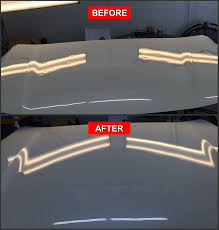
Understanding Paintless Dent Repair: A Professional Guide
Automobile owners understand that dents and dings are an inevitable part of vehicle ownership. Whether from minor collisions, hailstorms, or even stray shopping carts, these imperfections can mar the appearance of your car. Traditionally, dent repair has been both time-consuming and costly. However, Paintless Dent Repair (PDR) offers a revolutionary alternative that is efficient, cost-effective, and environmentally friendly. This guide delves into the world of PDR, explaining its benefits and process.
What is Paintless Dent Repair?
Paintless Dent Repair is a specialized method used to remove minor dents and dings from a vehicle’s body without the need for painting or extensive bodywork. This technique leverages the durability of modern automotive paints, which allows technicians to reshape the damaged area back to its original form without affecting the paint. PDR is most effective on small to medium-sized dents, often resulting from minor impacts and hail damage.
The Benefits of Paintless Dent Repair
Cost-Effective Solution
One of the primary advantages of PDR is its cost-effectiveness. Traditional dent repair methods often involve sanding, filler, and repainting, which can be quite expensive due to the labor and materials involved. PDR, on the other hand, eliminates the need for these additional steps, significantly reducing the overall repair cost.
Time Efficiency
PDR is a quicker process compared to traditional methods. Since it doesn’t require extensive prep work or curing time for paint, repairs can often be completed within a few hours. This efficiency means less downtime for your vehicle, allowing you to get back on the road sooner.
Environmentally Friendly
Paintless Dent Repair is an eco-friendly option for repairing vehicle damage. Traditional dent repair techniques involve the use of chemical-laden paints and fillers, which can be harmful to the environment. PDR eliminates the need for these materials, reducing the environmental impact of the repair process.
Maintains Original Paint
One of the most significant benefits of PDR is that it preserves the vehicle’s original paint. Matching paint colors can be challenging, and even a slight mismatch can affect the car’s resale value. By maintaining the factory paint, PDR ensures that the vehicle retains its original appearance and value.
The PDR Process
Assessment
The first step in the PDR process is a thorough assessment of the damage. Technicians will inspect the dent to determine its size, depth, and location. They will also evaluate whether the paint has been cracked or chipped, as PDR is only suitable for damage where the paint remains intact.
Accessing the Dent
Once the assessment is complete, the technician will figure out the best way to access the dent. This may involve removing interior panels, taillights, or other components to reach the underside of the dent. Proper access is crucial for effectively pushing the dent out from behind.
Applying Pressure
Using specialized tools, the technician will gently massage and push the dent from the inside out. This process requires skill and precision, as applying too much pressure can cause further damage. The goal is to gradually work the dent back to its original shape without disturbing the paint.
Final Touches
After the dent has been successfully repaired, the technician will reassemble any removed parts and conduct a final inspection. They will ensure that the repair is seamless and that the vehicle’s surface is smooth and free of imperfections.
Conclusion
Paintless Dent Repair offers an innovative and efficient solution for addressing minor vehicle damage. Its cost-effectiveness, time efficiency, environmental benefits, and ability to maintain original paint make it an attractive option for vehicle owners. By choosing PDR, you can restore your car’s appearance and value quickly and affordably. Next time you encounter a dent or ding, consider the advantages of Paintless Dent Repair for a professional and lasting result.




